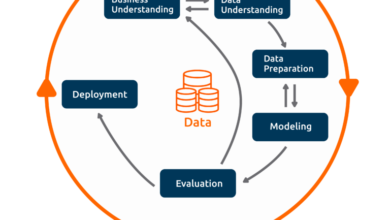Tax Filing Deadline Scheduling: A Partnership Checklist

While tax season is stressful for everyone, partnerships, freelancers, and business owners confront particular challenges. Corporate entities, in contrast to individual taxpayers, frequently have particular challenges when trying to maximize tax savings and guarantee accurate filings. This all-inclusive manual will offer a thorough checklist to help partnerships—especially those set up as Partnership LLCs—get ready for the tax filing deadline. We’ll also talk about the typical tax preparation problems that business owners and independent contractors deal with.
Recognizing Your Partnership Tax Obligations
Understanding the tax responsibilities associated with being in a partnership is essential before beginning the checklist. For tax purposes, partnerships are regarded as “pass-through” entities, meaning that the business is exempt from paying income taxes. Rather, gains and losses are distributed to each partner independently, who subsequently reports them on their individual tax returns.
Compile all required paperwork
Getting all the required paperwork together is one of the first stages in getting ready for the tax filing deadline. This comprises:
1. Income Statements and Balance Sheets: These are crucial records for accurate tax filing since they give you a succinct overview of your partnership’s finances.
2. Receipts and Invoices: Keep a record of every expense you incur for your business, as you may be eligible to deduct a portion of these from your taxable income.
3. Tax Returns from Prior Years: Use these as a guide and to make sure your reporting is consistent.
4. Partnership Agreement: This is a useful tool to handle any disputes that may emerge while submitting your taxes because it outlines the terms and circumstances of your partnership.
Ascertain Your Taxes and Make Quarterly Payments
One of the most frequent problems faced by business owners and independent contractors is having to estimate taxes and make quarterly payments. Partnerships are required to calculate and pay their yearly tax due, in contrast to salaried workers who have taxes deducted from their income. Penalties and interest may be incurred if this is not completed.
When figuring out your taxes, take into account:
1. Review Prior Years: To ascertain your tax liability, review the revenue and outlays for your partnership from prior years.
2. Use Tax Software: You can estimate your quarterly tax liabilities with the help of many tax software products.
3. Speak with a Tax Specialist: Getting advice from a tax specialist will ensure accuracy and ease your mind if you’re not sure how to estimate your taxes.
Optimize Tax Credits and Deductions
It can be difficult for independent contractors and business owners to maximize their tax benefits. Nevertheless, partnerships can lower their tax obligation in a number of ways by taking advantage of credits and deductions. The following are some typical credits and deductions to take into account:
1. Business expenses: You can deduct routine and essential business costs from your taxable income, such as rent, utilities, and office supplies.
2. Home Office Deduction: You can qualify for a home office deduction if you dedicate a portion of your living space to work-related activities.
3. Health Insurance costs: Partnerships are excused from paying their members’ and their families’ health insurance costs.
4. Retirement payments: You can deduct contributions to retirement plans such as SIMPLE IRAs or SEP IRAs from your taxable income.
5. Tax Credits: To lower your tax bill, look into potential tax credits like the Small Business Health Care Tax Credit or the Work Opportunity Tax Credit.
Put Schedule K-1 and Form 1065 in the file.
In order to record income, losses, and deductions, partnerships are required to file Form 1065, U.S. Return of Partnership Income. A Schedule K-1, outlining each partner’s portion of the partnership’s income, credits, and deductions, must also be provided to them. The following is how these forms should be handled properly:
1. Filling Out Form 1065: This form requires details regarding the income and out-of-pocket costs of your partnership. Make sure that the data is correct and comprehensive.
2. produce Schedule K-1: To report their portion of the partnership’s revenue on their personal tax return, each partner must produce a Schedule K-1. Ensure that every Schedule K-1 is precise and delivered to partners on time.
3. File on Time: For calendar year partnerships, Form 1065 must be filed by March 15th. You can use Form 7004 to request an extension if you require extra time.
Examine and Adjust Accounting Documents
Before submitting your taxes, it is imperative that you review and balance your financial records. This step verifies that there are no inconsistencies and that all income and expenses have been reported accurately. This is how you approach it:
1. Reconcile Bank Statement: Verify that all transactions have been accurately recorded by looking at your bank statements and accounting records.
2. Check Accounts Payable and Receivable: Verify that all unpaid bills and invoices have been settled.
3. Check for Errors: Examine your financial records for any discrepancies or mistakes, and then make the required adjustments.
Examine Local and State Tax Requirements
Partnerships sometimes have state and local tax responsibilities in addition to federal tax duties. These could vary greatly based on where you live. The following are some things you ought to do:
1. Research State and Local Taxes: Determine which taxes, such as income taxes and sales taxes, are required in your state and locality.
2. File State and Local Returns : Make sure you submit by the due dates any required state and local tax returns.
3. Pay estimated State Taxes: To avoid fines, if any, throughout the year, pay expected state taxes.
Create Future-Programme Plans
You’ve handled the current tax season; now it’s time to make future plans. The following advice will assist you in meeting your tax obligations:
1. Set Up a Tax Calendar: To assist you in remembering crucial dates, like filing deadlines and quarterly tax payments, make a tax calendar.
2. Maintain Accurate Records: To make tax preparation easier, keep thorough and structured financial records all year long.
3. Consult a Tax expert: Schedule frequent meetings with a tax expert to stay up to date on changes to tax laws and to obtain customized advice.
4. Consider Tax Planning Strategies: To reduce your tax liability, consider tax planning techniques including deferring income or accelerating spending.
Conclusion
Getting ready for the tax filing deadline can be difficult, particularly for business owners, independent contractors, and partnerships. Nevertheless, you can make sure that you fulfill all of your tax duties and optimize your tax savings by adhering to this thorough checklist. For tax season to proceed well, every step counts, from assembling required paperwork to submitting Schedule K-1 and Form 1065. Recall that handling the intricacies of partnership LLC tax filing can be greatly aided by maintaining organization and obtaining expert assistance.



